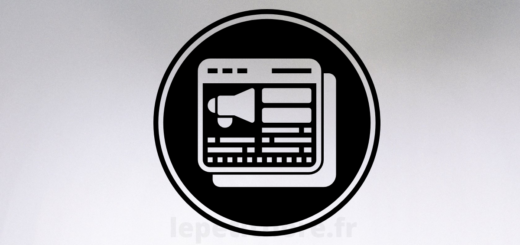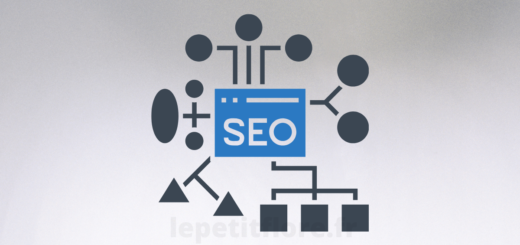Mobile App Marketing: 5 Success Stories to Draw Inspiration From

In 2018 the year 2018, less than 0.01 percent of mobile apps on the market will be successful commercially. This is what Gartner claims and there’s plenty of evidence to support this prediction. With the increase in tools for developing mobile apps and the rising “citizen development” initiative, creating mobile applications has never been simpler. Quality of code and application performance aside, the most important reason companies don’t get into the App Store and Google Play charts is poor marketing. If you’ve got a great idea for an app you should not be astonished by Rovio’s rapid success and invest some time (and cash!) on marketing.
The top earners (iOS developers who earn at least $50 thousand in revenue, which is 12% from the App Store’s publisher registered) are able to afford $30k as an average budget for marketing and allocate 14% of the time they spend on their app. If you’re a newbie and haven’t raised any money through Kickstarter and other crowdfunding platforms, your app could still be a success in the event that you select the appropriate marketing strategy. Here are some of the app’s marketing success examples that show you can accomplish more in less.
Marketing done correctly top 5 apps with the most successful stories
Stay.
While developing an app for Android first isn’t an unheard of trend this is what the team from Cutehacks created. Stay.com lets users make their own travel guides that are personalized that can be saved on an iPhone and then use the information offline. The app is based on first-hand experiences from the top baristas, media personalities and chefs across the globe and makes you be at ease no whatever city you’re in, and also save cost for traveling. Cutehacks worked for nearly six months working on Stay.com’s Android as well as iOS version of Stay.com Here’s what they learned. Firstof all, it’s important to consider the Android style of an app. Designs that resemble iOS are likely to annoy Android users, as it’s the App Store as well as Google Play have totally different UX/UI standards. While Cutehacks produced a beautiful application that was able to handle various Android resolutions, they got many negative reviews from dedicated Androiders. There’s memory, and performance. In 2012 (and it was also the year the Stay.com app was released) it was discovered that the performance of any Android application was dependent on the device it was running which meant that Cutehacks had to make major changes in their code. They discovered that the Facebook APIs were shaky and poorly documented , and they took a significant amount of time looking up information for developers via Quora or Stack Overflow. It appears that the entire process of Cutehacks failed, but this is far from the truth. The team was able to implement the ACRA tool that allows users to report failures each time Stay.com was down. They also utilized Trello to improve project management (and inadequate management is the primary reason that 30% of IT project fail). What makes their story worthy of mentioning is the prompt adjustments the company made Stay.com after they realized that users were unhappy with the current Android version. If you’re looking to be successful in the future, you must listen to feedback from users and adhere to the App Store/Google Play guidelines for developers and guidelines, naturally;
Languages.
Jeremy Olson, a tech-savvy college student from North California, launched the Languages translation application back in 2013. The app was not his first foray into mobile software development. In fact, his Grades application (enables students to keep track of their academic progress throughout the semester) received positive reviews from both tech experts as well as the people in general. But, the app didn’t make any revenue which is why Jeremy decided to go with a more commercially-oriented project. Demand for translator software was – and is! It was huge, and it was a simple choice. In addition there was no reasonable translator that could work offline at the time (takeaway #1: take into consideration the timing and market demand). The team of Jeremy took a lot of steps to test the idea as well as to identify the functionality that would be desirable and develop a fantastic UX. The first step was to identify the personas of their customers. Jeremy and his associates were well-versed in the process of translation, therefore they didn’t need to speak to potential customers in person (although that’s the way Zappos founded founder, Jeremy, validated his business concept). The customer (or purchaser) persona is an entirely fictional character that possesses the characteristics that are typical of your intended audience. Olson identified a variety of factors that influence a person’s decision to buy the program which included his work, age, proficiency, and the setting in which Languages could be useful. The team developed three distinct personas that cover all the major characteristics of their intended market. The creation of a buyer’s profile is the most important factor in launching and promoting apps for mobile phones. the majority of marketers have personas hidden away because they don’t know why or do not know how to use they are
Flappy Bird.
The game that went viral was released on iTunes 2013 however it wasn’t until the beginning of 2014 that the app started to garner enormous popularity. Dong Nguyen, a Vietnam-based independent programmer who developed Flappy Bird over a couple of days, claimed that he was able to create the famed virality by using an addictive game. But some tech specialists (including Michael Silverwood of VentureBeat) think this isn’t the situation. To better understand how this game was able to top the App Store charts at all it is necessary to gain more insight into Apple’s ranking algorithm. There are many elements that affect an app’s ranking, including the amount of installs it has received over the last several hours, the number of reviews received and retention. Instead of spending massive amounts to acquire users, GEARS Studios decided to concentrate on the reviews. At the point that Flappy Birds reached #1 on iTunes and was receiving hundreds of reviews every day. The game received 700,000 reviews within a couple of months. this is more than 200 percent higher than Candy Crush was receiving within a year. It appears that GEARS used the “dark pattern” which was that a rate button was displayed each after a user had finished their game and decided to begin a new game. The button was placed in near in the same spot where the normal play button would be. Users tapped it randomly and were taken to the App Store’s rates page rather. Soon, writing reviews about Flappy Birds became popular which is why GEARS Studios simply removed the button in a subsequent update to the application. We do not advise the use of tricks to trick users. The lesson to learn in this case is that app chart performance isn’t always measured by how many downloads.
Clash of Clans.
The ability to come up with a brilliant and completely unique concept for an app definitely increases your odds of success however, there’s nothing wrong with being a little cliché, also! There are a myriad of games that are strategy-based featuring heroes as well as fairies, monsters as well as precious stones. Supercell is a previously undiscovered mobile software development company based in Finland has decided to not reinvent the wheel, and… simply created another game. In 2013, Clash of Clans reported to be producing four million dollars in daily revenues from in-app purchases, which is much more than the average freemium ever made. Supercell certainly did their best to make stunning layouts and arousing gameplay. But, it’s the best selection of tools for app monetization which made Clash of Clans an instant success. In essence, the game is about monetization however Supercell is able to keep it in the hood, so those who can’t (or aren’t able to) spend a few dollars for virtual currency are able to play the game and need to wait to play for a while. After downloading the game, you’ll be in the tutorial phase and are rewarded with plenty of gems to play for free. The gems are used to purchase upgrades, gold, and an the elixir which protects you from goblins attack. It’s all very cheap So you keep spending, and you’ll be broke quickly. As the game gets more complex as the game progresses, prices increase and your buying habits have already been established! The game had Clash of Clans players who would spend as much as 20000 dollars on expensive stones when the game was at its best form. The game’s popularity remained at high-grossing position throughout the year and beyond. In the constantly evolving mobile world long-term viability is difficult to attain. If you’re looking to emulate the success of Supercell be sure to create an effective and well-thought-out strategy for monetization;
The CheckPoints as well as the List Bliss.
Todd And Mark DiPaola, the founders of inMarket believes that creating an app that is mobile is like building a house: prior to you begin “put some thought about what your rooms will appear like”. In the case of inMarket, their CheckPoints shopping app allows users to make a purchase at every single store in the United States and receive instant rewards such as discounts and coupons that are digital. The inMarket network has more than 46 million people using it; in the early 2000s, when CheckPoints was still in the in its early stages of development Todd as well as Mark were unable to settle what the app’s capabilities would be. When they came up with List Bliss, they kept simple. The app lets users easily create shopping lists simply by scanning barcodes of various products and sharing this list to family members and friends to make sure nothing’s missing. InMarket maintained the list of features in the app and quickly corrected the bugs before launch. We’ve all heard that Feature Creep kills an app’s performance. You’ll be amazed to discover it also has an impact on marketing. A well-designed marketing campaign should be able to clearly (but concisely) explain the advantages of a product, and communicate the message to the intended viewers using as little language as is possible. For all we know the “fresh” smartphone owner isn’t aware that he needs more shopping lists. What’s the best way you planning to advertise your likely cool and beautiful app with tons of features when you have only 10 seconds to get the attention of your customers? Beware of Feature Creep. It’s the most important factor in planning (and the launch of) an effective marketing campaign.



